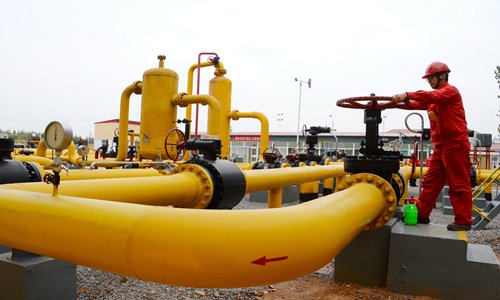While the rest of the world continues to struggle with fuel demand recovery in fits and starts, China has been a key factor in supporting oil prices as it breaks crude oil import records. Record Chinese crude oil imports over the past few months have supported still weak global oil demand and instilled confidence in the market that the demand recovery will continue.
But the Chinese buying spree may be coming to an end, as oil is not as dirt cheap as it was in April and as China is estimated to have amassed large crude inventories in commercial and strategic storage.
Potentially lower-than-record Chinese oil imports in the coming months, combined with growing fears of a second COVID-19 wave, could be major drags on oil prices, especially if demand recovery outside China stalls.
China Splurges On Record Crude Oil Imports
For two consecutive months, China broke all previous records for crude oil imports. Sure, recovering fuel demand after China’s lockdown played its role in higher consumption, but the major driver of record-breaking crude imports was the lowest oil price in nearly two decades in April, when global demand crashed by close to 20 million barrels per day (bpd).
Chinese refiners, both state-held giants and independent refiners in the Shandong province, rushed to stock up on ultra-cheap crude oil, locking in crude for delivery in May, June, and July. No wonder then that China’s crude oil imports in May and June smashed records.
In May, China imported a record-high 11.34 million bpd of crude oil. While part of the record imports was driven by economic activity picking up, the other driver was April’s meager oil prices, which incentivized China’s crude oil stockpiling in strategic and commercial inventories.
Then in June, China smashed its record from a month earlier and imported an all-time high of 12.9 million bpd of crude, more than 1.5 million bpd higher than the imports in May and a 34-percent jump compared to June last year, according to Reuters calculations of data from China’s General Administration of Customs.
For the first half of 2020, despite the lockdown in the pandemic, China’s crude oil imports jumped by 10 percent year over year to an average of 10.95 million bpd.
Oil Storage Filling Likely Hit Record Too
According to calculations by Reuters’ columnist Clyde Russell, China hoarded crude oil at a rate of 1.88 million bpd between January and May, up by around 670,000 bpd from the 2019 estimated fill rate of 1.21 million bpd.
In June, this rate may have been as high as 2.77 million bpd, Russell estimated, which suggests that China may be stockpiling the dirt cheap oil it bought at April’s prices for processing later this year.
Since China doesn’t report inventory levels either in commercial storage or strategic reserves, analysts can only speculate how much crude oil the world’s top oil importer has stashed and, more importantly, how much storage capacity it has left for the oil that will be arriving in the coming months.
Chinese refiners processed a record-high amount of crude oil in June, 14.08 million bpd, and yet China is estimated to have stashed a record-high daily volume of oil last month.
Oil Import Growth Could Slow Down Through The Rest Of 2020
Despite processing rates hitting a record in June, China’s exports of refined oil products were lower than those in May and lower by 29 percent compared to June 2019, according to Reuters estimates of customs data. This suggests that demand in Asia is still weak, even if China’s domestic demand looks strong.
Going forward, China’s record crude oil buying spree may be coming to an end.
First, oil prices are now double the lows from April—this could discourage refiners from importing record volumes from August onwards, especially as oil in storage is abundant.
Then, weaker fuel demand recovery in the rest of Asia still weighs on refining margins in the region—this could discourage refiners in China from continuing to process record volumes of crude oil.
Next up, there’s the storage wild card—no one outside China is really certain how much crude the world’s largest oil importer has amassed in commercial and strategic inventories. But estimates point to growing amounts of oil in both onshore storage and floating storage off China.
Oil prices doubling from April to over $40 a barrel in July have likely put an end to the bargain hunting of Chinese refiners. Crude oil imports are likely to stay high this month and probably next, until all the oil bought in April and May is delivered to Chinese shores.
But after that, toward the end of the third quarter, China’s record pace of crude oil import could stumble, especially if demand recovery in the rest of Asia falters and continues to depress refining margins, discouraging China from exporting high volumes of fuels to the neighboring markets.
If China doesn’t keep its record imports of crude oil through the rest of the year, it could remove a major support factor for oil prices, especially if oil demand recovery elsewhere wanes in a second coronavirus wave.

 Iran Energy News Oil, Gas, Petrochemical and Energy Field Specialized Channel
Iran Energy News Oil, Gas, Petrochemical and Energy Field Specialized Channel



